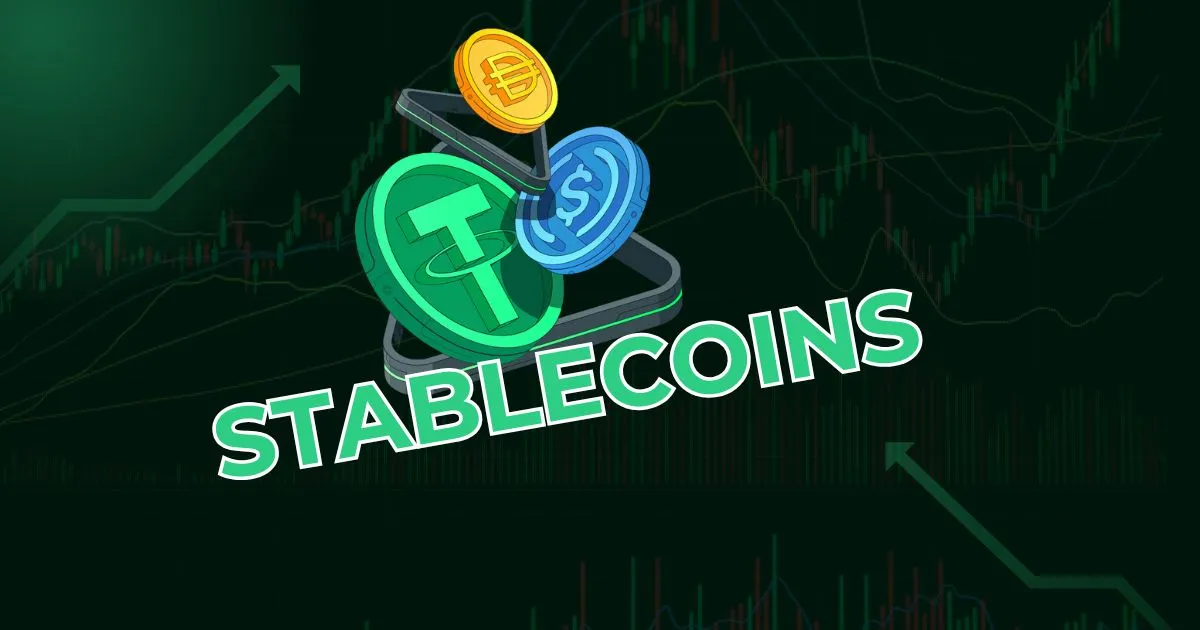What are Stablecoins?
Stablecoins are a category of cryptocurrencies designed to maintain a stable value by pegging their worth to external assets like fiat currencies, commodities, or algorithms. Unlike highly volatile cryptocurrencies such as Bitcoin and Ethereum, stablecoins offer a predictable price, making them essential tools for traders, investors, and businesses engaging in digital finance.
Stablecoin Definition
Stablecoins aim to maintain a steady value, often pegged to assets such as the US dollar, gold, or other financial instruments. They play a vital role in the digital economy by offering a reliable store of value and a means of payment without the risk of significant price swings.
Types of Stablecoins
Stablecoins can be categorized into four main types based on how they maintain their stability:
- Fiat-Backed Stablecoins: These are backed by traditional currencies like the US dollar, euro, or yen, held in reserve by financial institutions. Examples include Tether (USDT) and USD Coin (USDC).
- Commodity-Backed Stablecoins: These stablecoins derive their value from tangible assets such as gold, silver, or oil. Examples include PAX Gold (PAXG) and Digix Gold (DGX).
- Crypto-Backed Stablecoins: These stablecoins are backed by other cryptocurrencies and often use over-collateralization to mitigate risk. DAI, issued by MakerDAO, is a leading example.
- Algorithmic Stablecoins: These use complex algorithms and smart contracts to control supply and demand, maintaining price stability without collateral backing. Examples include Frax (FRAX) and Ampleforth (AMPL). However, algorithmic stablecoins have faced challenges, with some, like TerraUSD (UST), collapsing due to instability.
Popular Stablecoins in the Market
Several stablecoins have gained popularity due to their reliability and wide adoption. Here’s a list of some of the most prominent stablecoins:
- Tether (USDT): The most widely used stablecoin, pegged to the US dollar.
- USD Coin (USDC): A regulated stablecoin issued by Circle and Coinbase.
- Binance USD (BUSD): Issued by Binance, backed by US dollars held in reserve.
- Dai (DAI): A decentralized stablecoin backed by crypto collateral.
- TrueUSD (TUSD): Fully collateralized and regularly audited.
- Pax Dollar (USDP): Regulated and backed by the US dollar.
- Gemini Dollar (GUSD): Issued by the Gemini exchange, compliant with financial regulations.
- PayPal USD (PYUSD): Launched by PayPal, aiming to bridge traditional finance and blockchain.
Stablecoins Use Cases
Stablecoins have multiple applications in the financial ecosystem, including:
- Trading and Arbitrage: Traders use stablecoins to hedge against market volatility and move funds between exchanges quickly.
- Cross-Border Payments: Stablecoins enable instant, low-cost international transactions without traditional banking intermediaries.
- Decentralized Finance (DeFi): Many DeFi applications use stablecoins for lending, borrowing, and staking.
- Remittances: Stablecoins offer a cheaper alternative to traditional remittance services for sending money globally.
- E-commerce: Merchants increasingly accept stablecoins as payment for goods and services.
- Yield Farming: Investors earn interest on stablecoins by depositing them into liquidity pools and DeFi protocols.
Stablecoins Market Cap
The total market capitalization of stablecoins has grown significantly over the years. As of the first quarter of 2025, stablecoins collectively hold a market cap exceeding $200 billion, reflecting their increasing adoption and demand in the crypto space. Tether (USDT) remains the leader in market cap, followed closely by USD Coin (USDC)
Stablecoin Prices: How Are They Maintained?
Stablecoins maintain their price stability through different mechanisms:
- Collateralization: Backed by fiat currency or assets held in reserve.
- Algorithmic Adjustments: Supply and demand are managed using smart contracts.
- Arbitrage Trading: Traders help maintain the peg by buying when prices dip below $1 and selling when prices exceed $1.
- Regulatory Compliance: Ensuring transparent audits and legal backing enhances trust and stability.
You Might Also Want To Go Through: ETF vs Index Fund: A Complete Guide for Smart Investing in 2025
Best Stablecoins for Investment and Use
Choosing the best stablecoins depends on factors such as transparency, stability, and regulatory compliance. Some of the most reliable stablecoins include:
- USDT (Tether): High liquidity and wide acceptance.
- USDC (USD Coin): Strong regulatory compliance.
- BUSD (Binance USD): Backed by Binance and highly integrated into DeFi platforms.
- DAI: Decentralized and crypto-backed, making it less prone to regulatory risks.
- PYUSD (PayPal USD): A strong option for mainstream adoption.
Stablecoin Regulation: The Growing Need for Oversight
As stablecoins gain mainstream adoption, regulatory bodies worldwide are increasing their oversight. Key regulatory developments include:
- GENIUS Act: The U.S. Senate is set to vote on the “GENIUS Act,” a significant stablecoin bill that aims to provide federal legitimacy to stablecoins and boost their adoption as mainstream payment options. The bill proposes a dual regulatory framework for stablecoin issuers, allowing them to register with either state or federal authorities
- Global Regulatory Efforts: Countries worldwide are working on clear regulatory guidelines for stablecoin issuers to ensure transparency, consumer protection, and financial stability.
Future of Stablecoins: What Lies Ahead?
The stablecoin sector continues to evolve, with growing adoption from financial institutions and governments exploring central bank digital currencies (CBDCs). Key trends include:
- Greater Institutional Adoption: More banks and payment providers are integrating stablecoins, motivated by the prospect of reshaping cross-border payments using cryptocurrency. Notably, major banks and fintech companies are entering the stablecoin market, aiming to capitalize on stablecoin transactions, which provide a cost-effective and immediate alternative to conventional banking systems
- Enhanced Regulations: Stricter rules are being implemented to ensure transparency and financial stability in the stablecoin market.
- Integration with Traditional Banking: Stablecoins are becoming a bridge between crypto and fiat ecosystems, facilitating seamless transactions.
- Innovations in Algorithmic Stablecoins: Improvements in algorithmic models are being developed to create more resilient decentralized stablecoins.
Stablecoins have become a vital part of the cryptocurrency ecosystem, offering stability, security, and efficiency for digital transactions. As the industry continues to grow, the role of stablecoins will expand further, integrating with traditional finance and transforming global payments. Whether you’re an investor, trader, or business owner, understanding stablecoins and their applications is essential for navigating the future of digital finance.
